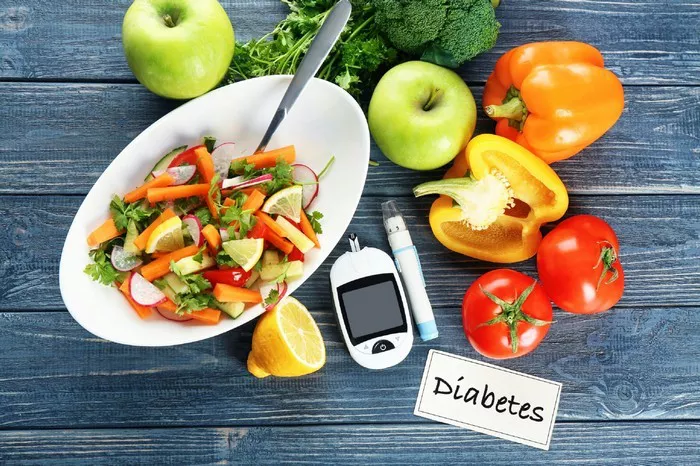Managing blood sugar levels is an essential aspect of living with diabetes and preventing the condition from worsening. A balanced diet plays a critical role in controlling blood glucose levels, as certain foods can cause blood sugar spikes while others help maintain steady levels throughout the day. Understanding which foods support healthy blood sugar levels is fundamental for people with diabetes or those at risk of developing the condition. In this article, we will explore a range of foods that are beneficial for blood sugar control, focusing on their nutritional properties, how they affect glucose levels, and how to incorporate them into a diabetes-friendly diet.
The Role of Food in Blood Sugar Regulation
The body’s ability to manage blood glucose, or blood sugar, is influenced by several factors, including insulin production, insulin resistance, and the types of foods consumed. After eating, food is broken down into glucose, which enters the bloodstream and is used by cells for energy. In individuals with diabetes, this process is often disrupted, either because the body cannot produce enough insulin (type 1 diabetes) or because the body becomes resistant to the insulin it produces (type 2 diabetes).
Blood sugar levels can be managed through a combination of medication, physical activity, and diet. The foods we eat can directly impact the speed and magnitude of blood sugar spikes. Some foods cause rapid increases in glucose, while others have a more gradual effect or even help lower glucose levels. The goal for anyone managing blood glucose is to choose foods that promote steady, stable levels of blood sugar throughout the day.
The Importance of Choosing Low Glycemic Index (GI) Foods
The Glycemic Index (GI) is a measure of how quickly a carbohydrate-containing food raises blood glucose levels. Foods with a high GI, such as white bread or sugary snacks, cause rapid increases in blood sugar, while those with a low GI, such as whole grains and vegetables, are digested and absorbed more slowly, leading to gradual increases in blood sugar. Low-GI foods are especially beneficial for blood sugar management because they reduce the likelihood of sharp spikes and drops in glucose levels.
When considering which foods are good for blood sugar, it’s important to prioritize those with a low or moderate glycemic index. These foods not only help control blood glucose but also provide essential nutrients, fiber, and antioxidants that support overall health.
Vegetables: The Foundation of a Blood Sugar-Friendly Diet
Vegetables are a cornerstone of a healthy, blood sugar-friendly diet. Packed with fiber, vitamins, minerals, and antioxidants, vegetables provide numerous health benefits while having minimal impact on blood glucose levels. Non-starchy vegetables, in particular, are ideal choices for blood sugar control.
Leafy Greens
Leafy greens, such as spinach, kale, and Swiss chard, are low in carbohydrates and high in fiber, making them an excellent choice for managing blood glucose levels. They are also rich in magnesium, a mineral that plays a role in insulin sensitivity and glucose metabolism. Magnesium deficiency is commonly associated with insulin resistance, so incorporating magnesium-rich leafy greens into your diet can help improve insulin function.
Leafy greens are also low in calories and have a very low glycemic index, meaning they won’t cause a rapid increase in blood glucose. Additionally, they provide a wide array of vitamins and minerals, including vitamins A, C, and K, which support immune function and bone health.
Cruciferous Vegetables
Cruciferous vegetables, such as broccoli, cauliflower, and Brussels sprouts, are also highly beneficial for blood sugar control. These vegetables are rich in fiber, which slows down the absorption of glucose into the bloodstream, helping to prevent blood sugar spikes after meals. They are also rich in antioxidants and anti-inflammatory compounds that support overall health.
Broccoli, for example, contains sulforaphane, a compound that has been shown to improve insulin sensitivity and reduce inflammation in people with diabetes. Cruciferous vegetables are also low in calories, making them a great option for weight management, which is crucial for controlling blood glucose levels.
Sweet Potatoes
Although starchy, sweet potatoes have a relatively low glycemic index compared to other starchy foods like white potatoes or rice. They are also high in fiber, particularly in the skin, which helps to slow the release of glucose into the bloodstream. Sweet potatoes are rich in vitamins A and C, which provide immune support and antioxidant protection.
In addition to their blood sugar benefits, sweet potatoes are a good source of potassium, which helps to maintain healthy blood pressure, a common concern for people with diabetes.
Whole Grains: Slow-Digesting Carbs for Stable Blood Sugar
Whole grains are an excellent source of carbohydrates for people with diabetes, as they provide a steady, sustained release of glucose into the bloodstream. Unlike refined grains, which are quickly digested and can cause rapid blood sugar spikes, whole grains contain fiber and other nutrients that slow the absorption of glucose.
Oats
Oats, particularly steel-cut or old-fashioned oats, are a great option for managing blood sugar. They are high in soluble fiber, which forms a gel-like substance in the stomach and slows the absorption of glucose. This helps prevent spikes in blood sugar after meals. Oats also contain beta-glucan, a type of soluble fiber that has been shown to improve insulin sensitivity.
Eating oats regularly may also help lower cholesterol levels, which is important for people with diabetes, as they are at higher risk of heart disease. Opt for unsweetened oatmeal or prepare it with a small amount of fruit and nuts to keep it blood sugar-friendly.
Quinoa
Quinoa is a nutrient-dense whole grain that is high in protein, fiber, and essential vitamins and minerals. It has a low glycemic index and a relatively low carbohydrate content, making it a suitable option for blood sugar control. Quinoa is also a complete protein, meaning it contains all nine essential amino acids, which are necessary for muscle repair and overall health.
Quinoa is versatile and can be used as a base for salads, in soups, or as a substitute for rice in many dishes. Its fiber content helps slow the absorption of glucose, reducing the risk of blood sugar spikes after meals.
Barley
Barley is another excellent whole grain for blood sugar management. It is high in soluble fiber, particularly beta-glucan, which helps improve insulin sensitivity and reduce blood glucose levels. Barley has a low glycemic index, meaning it has a slower effect on blood glucose compared to refined grains like white rice or white bread.
Barley can be used in a variety of dishes, including soups, salads, and side dishes. It also pairs well with vegetables, lean proteins, and healthy fats for a well-rounded, blood sugar-friendly meal.
Healthy Fats: Supporting Insulin Sensitivity
Incorporating healthy fats into the diet is essential for managing blood glucose levels. Healthy fats help improve insulin sensitivity, which is crucial for individuals with type 2 diabetes. Additionally, fats provide satiety, helping to control hunger and prevent overeating.
Avocados
Avocados are an excellent source of monounsaturated fats, which have been shown to improve insulin sensitivity and reduce the risk of heart disease. These healthy fats are absorbed slowly, helping to keep blood sugar levels stable. Avocados are also rich in fiber, which further slows the absorption of glucose.
In addition to healthy fats and fiber, avocados are packed with potassium, which helps regulate blood pressure. This is especially important for individuals with diabetes, as high blood pressure is a common comorbidity.
Nuts and Seeds
Nuts and seeds, including almonds, walnuts, chia seeds, and flaxseeds, are nutrient-dense foods that provide a combination of healthy fats, protein, and fiber. The healthy fats found in these foods help to improve insulin sensitivity, while the fiber helps to stabilize blood sugar levels.
Studies have shown that regular consumption of nuts, particularly almonds, can help improve glycemic control in people with diabetes. Nuts and seeds also provide antioxidants, which protect against oxidative stress and inflammation — factors that can worsen diabetes complications.
Protein-Rich Foods: Stabilizing Blood Sugar
Including lean protein sources in the diet is crucial for maintaining steady blood sugar levels. Protein has a minimal impact on blood glucose and can help stabilize blood sugar after meals by slowing the digestion of carbohydrates.
Lean Meat and Poultry
Lean meat, such as chicken, turkey, and lean cuts of beef or pork, are excellent sources of protein that have little to no effect on blood sugar levels. These proteins are also rich in essential amino acids, which support muscle repair, growth, and overall metabolic function.
When consuming meat, it is important to choose lean cuts and avoid processed meats, such as bacon or sausage, which can be high in unhealthy fats and sodium.
Fish and Seafood
Fish, especially fatty fish like salmon, mackerel, and sardines, is rich in omega-3 fatty acids, which have anti-inflammatory properties and may help improve insulin sensitivity. Fish is also a great source of high-quality protein and contains essential nutrients like vitamin D and selenium.
Omega-3 fatty acids have been shown to reduce the risk of cardiovascular disease, which is particularly important for individuals with diabetes, who are at a higher risk of heart disease.
The Importance of Hydration for Blood Sugar Control
Staying hydrated is an often-overlooked aspect of blood sugar management. Water is essential for maintaining normal blood volume and proper kidney function, both of which are important for regulating blood glucose levels. Dehydration can lead to higher blood sugar concentrations, as the body loses its ability to excrete excess glucose through urine.
Drinking water regularly throughout the day helps to keep blood sugar levels stable and supports overall health. For individuals with diabetes, it is particularly important to avoid sugary drinks, such as soda and fruit juices, which can cause rapid increases in blood glucose levels.
Conclusion
Managing blood glucose levels through diet is one of the most effective ways to control diabetes and prevent complications. By focusing on low-glycemic foods, such as vegetables, whole grains, healthy fats, and lean proteins, individuals can maintain stable blood sugar levels and support overall health. Additionally, staying hydrated and avoiding foods that cause rapid spikes in blood glucose is essential for long-term blood sugar management.
A balanced, nutrient-dense diet that prioritizes whole, minimally processed foods is key to blood sugar control. With the right dietary choices, individuals with diabetes can improve their glucose levels, manage their condition effectively, and enhance their quality of life. Working closely with a healthcare provider or a registered dietitian can help individuals tailor their diets to their specific needs and ensure optimal blood sugar control.
Related topics:
What Foods to Avoid During Gestational Diabetes
























